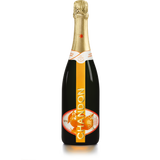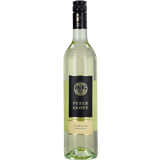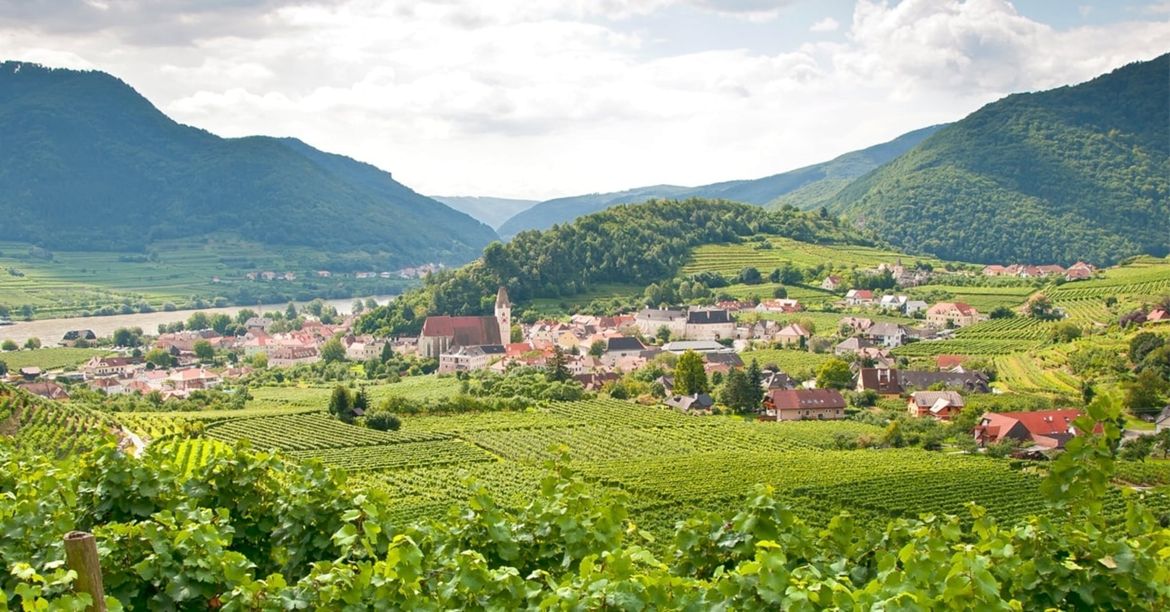Austria's Wine-Growing Regions - An Overview
Facts about Austria's wine-growing regions
Austria has a total area of around 44,200 hectares devoted to wine cultivation. In contrast, Spain has around one million hectares, Italy over 700,000 and Germany over 100,000. The size of the wine-growing area in Austria is therefore comparatively manageable and the 2.5 million hectoliters of wine produced per year is rather a small amount from an international perspective. Unfortunately, the number of vintners in Austria is steadily declining. While more than 32,000 were active in 1999, today there are only around 20,000 winegrowers who are dedicated to viticulture and wine production.
In general, there are four large, independent wine-growing regions in Austria, which are divided into a further 16 areas:
- Styria (Southeast, West and South Styria)
- Burgenland (Neusiedlersee, Neusiedlersee-Hügelland/Leithaberg, Central Burgenland, Southern Burgenland/Eisenberg)
- Lower Austria (Weinviertel, Wachau, Kamptal, Kremstal, Traisental, Wagram, Carnuntum, Thermenregion)
- Vienna
In addition, there is the Bergland wine-growing region, which is made up of Carinthia, Upper Austria, Salzburg, Tyrol and Vorarlberg.
Grape varietal index of the wine-growing regions in Austria
The size of the vineyards and the respective terroir have a major influence on the selection of grape varietals in Austrian viticulture. As a result, a total of 22 white and 14 red grape varieties are grown in the Alpine Republic. These produce high-quality Qualitätswein and premium Prädikatsweine as well as more basic Landwein. Interestingly, the cultivation of red grapes has become increasingly popular in recent years. The proportion of red wine has doubled in the last 20 years and now takes up a third of the total wine-growing area. The most important white grape variety in Austria is Grüner Veltliner (with a vineyard share of around 33 percent) and the best-known red variety is Zweigelt with around 14 percent.
Austria's wine-growing regions at a glance
Lower Austria With a little more than 26,000 hectares, Lower Austria is the largest wine-growing region in Austria. Both domestic and international grape varieties are grown. The region is divided into eight areas: The Weinviertel, Wachau, Kamptal, Kremstal, Traisental, Wagram, Carnuntum and the Thermenregion. In the latter, Zierfandler, Neuburger, Pinot Blanc and Rotgipfler are predominantly grown.
Vienna Vienna enjoys the distinction of being the only capital city in the world with its own wine-growing region. In this smallest of the Austrian wine-growing regions, Grüner Veltliner, Riesling, Weissburgunder and Chardonnay are popular, alongside red varieties such as St. Laurent, Cabernet Sauvignon and Zweigelt. Around 640 winegrowers work in Vienna's wine-growing region, producing the new, modern "Vienna Classic" wine line, among other products.
Styria Southern Styria is the highest wine-growing region in Austria and is also considered the home of fresh, fruity Welschriesling and fine, aromatic Muskateller. Crunchy Weissburgunder and Chardonnays, known here as Morillon, are also in demand. With its picturesque elevations, southern Styria is one of the most beautiful wine-growing regions in Austria and Europe. In southeast Styria, fruity, fresh wines are made from grape varieties such as Sauvignon Blanc, Welschriesling, Riesling, Grauburgunder, Weissburgunder, Chardonnay and Traminer, but Blaue Zweigelt also develops a delicately fruity character when grown here. West Styria is the smallest of the Styrian wine-growing regions and is considered the home of Schilcher, which is legally protected and is made from the Blauer Wildbacher vine. In addition, varieties such as Welschriesling, Weissburgunder, Sauvignon Blanc, Müller-Thurgau and Zweigelt also thrive.
Burgenland Burgenland stretches 11,500 hectares from Neusiedlersee, over the Neusiedlersee hill country (Leithaberg), and further into central and southern Burgenland (Eisenberg) and offers a true variety of grapes. White varietals such as Weissburgunder, Welschriesling, Muscat Ottonel, Sauvignon Blanc, Neuburger, Bouvier, Traminer and Chardonnay are just as at home in the Pannonian climate as the red Zweigelts, Blaufränkisch, Blauburgunders, Cabernet Sauvignons, Merlots and Syrahs.
All of Austria's wine-growing regions at a glance
| Wine region | Vineyard area | Important varieties |
| Weinviertel (Lower Austria) | 13,858 ha | Grüner Veltliner, Riesling |
| Kamptal (Lower Austria) | 3,907 ha | Grüner Veltliner, Riesling |
| Wagram (Lower Austria) | 2,720 ha | Grüner Veltliner, Riesling, Roter Veltliner |
| Kremstal (Lower Austria) | 2,368 ha | Grüner Veltliner, Riesling |
| Thermenregion (Lower Austria) | 2,181 ha | Zierfandler, Rotgipfler, St. Laurent, Pinot Noir |
| Wachau (Lower Austria) | 1,344 ha | Grüner Veltliner, Riesling |
| Carnuntum (Lower Austria) | 906 ha | Zweigelt, Blaufränkisch |
| Traisental | 815 ha | Grüner Veltliner, Riesling, |
| Southern Styria | 2,563 ha | Sauvignon Blanc, Muskateller, Weissburgunder, Morillon |
| Vulkanland Styria (Southeast Styria) | 1,524 ha | Welschriesling, Weissburgunder, Sauvignon Blanc, Traminer |
| Schilcherland (West Styria) | 546 ha | Blauer Wildbacher, Sauvignon Blanc, Weissburgunder |
| Neusiedlersee (Burgenland) | 5,975 ha | Welschriesling (sweet), Zweigelt |
| Leithaberg (Burgenland) | 3,097 ha | Weissburgunder, Chardonnay, Blaufränkisch |
| Mittelburgenland (Burgenland) | 2,104 ha | Blaufränkisch |
| Eisenberg (Burgenland) | 515 ha | Blaufränkisch |
| Vienna | 637 ha | Gemischter Satz, Grüner Veltliner, Chardonnay |
| Carinthia | 170 ha | White Burgundy varieties, Riesling, Sauvignon Blanc, Zweigelt, Blauburgunder |
| Upper Austria | 45 ha | Grüner Veltliner, Zweigelt, Rösler |
| Vorarlberg (mountainous region) | 10 ha | Müller-Thurgau, Riesling, Blauburgunder |
| Salzburg (mountainous region) | 7 ha | Frühroter Veltliner |
| Tyrol (mountainous region) | 5 ha | Chardonnay, Blauburgunder |
Austrian wine-growing regions are a paradise for the cultivation of top-quality wines
The particular conditions, such as numerous steep slopes and terraces and the special climate, are responsible for the unique fruit and elegance of top Austrian wines. In Austria, sun-kissed grapes often grow on stony soils and develop their mineral character from the earliest stage. The sun not only warms the grapes, but also the stony soil. The vines benefit from this even after sunset, because the warmed soil continues to give off heat. These are ideal conditions for growing grapes. In addition, long, warm autumn days contribute to the high quality of the grapes by extending the ripening phase and thus creating even more sugar in the berries. In general, Austria's wine-growing regions are characterised by warm, sunny summer days and mild autumn days with cool nights. These in turn have a very positive effect on the fine, fruity aromas in the wine. In terms of climate, the wine-growing regions in Austria from the north-east to the south-east differ quite significantly from one another. The north is characterised by dry and warm periods, in the south there is usually a generally warm and humid climate. Just as different are the soils, which are characterised by sandstone, limestone and clay slate (southern Styria) as well as deep loess or shell limestone (Leithaberg).
Latest reviews
-
 4.8 (77)
4.8 (77)CHANDON Garden Spritz 11.5% Vol., 0,75 L
-20%- Ready-to-serve aperitif
- With fine bitter orange liqueur
- Cuvée of Chardonnay, Pinot Noir & Sémillon
€ 16,89 € 20,99 (€ 22,52 / L)Delivery by December 17
-
-
 4.7 (28)
4.7 (28)CHANDON Garden Spritz - Pack of 4, 0,75 L
-3%- Ready-to-serve premium aperitif in a pack of 4
- Cuvée of Chardonnay, Pinot Noir & Sémillon
- With fine bitter orange liqueur
€ 19,49 € 19,99 (€ 25,99 / L)Delivery by December 17
-
-
 5.0 (1)
5.0 (1)Polz Welschriesling Südsteiermark DAC 2024, 0,75 L
- Fresh, light white wine
- Very clean and aromatic
- Dry, easy-drinking summer wine
€ 9,89 (€ 13,19 / L)Sold out
-
-
 4.2 (10)
4.2 (10)Peter Skoff Steirische Vielfalt 2024, 0,75 L
- A delightful, fragrant wine
- White wine cuvée of typical regional varietals
- Ideal summer wine for the garden and patio
€ 8,99 (€ 11,99 / L)Delivery by December 17
-
Magazine Articles:
Discover 9wines Online:
-
Austria: Free standard delivery from € 49,90
-
We operate in a
climate-conscious manner. -
Free
returns Secure payments
with SSL encryption technology




